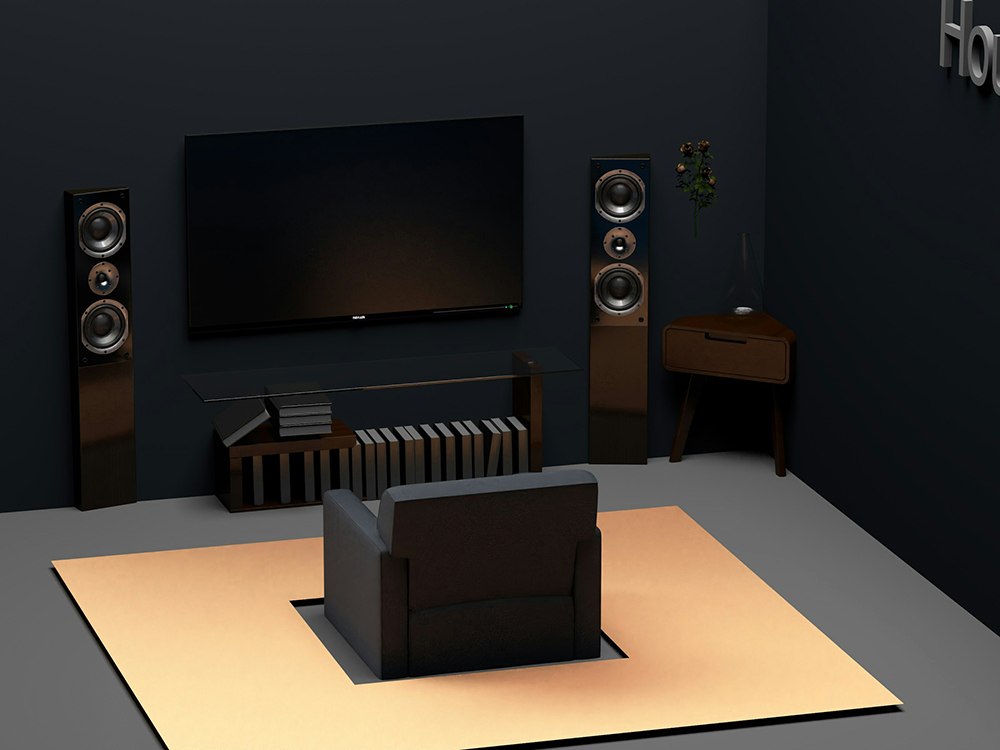If you love watching the latest blockbusters and want to do so from the privacy of your home, this advice is for you. As a homeowner, you likely have flexibility when it comes to transforming a loft, bedroom, living room, or garage into a home theater. It will take some work and planning, but do it right, and you’ll be thrilled with the results, and you may never go to a theater again.
Why Movie Buffs Need A Home Theater And What to Expect
There are various reasons why you should have a home cinema room, especially if you live and breathe movies. One is that you’ll have total control of your viewing experience. You have the freedom to play the film at a specific volume or pause it throughout. Plus, when you have the theater all set up, you can also use it to watch sports and play video games.
A home theater can be a fantastic addition to your home, but before you start drawing up plans, there are some considerations to keep in mind:
The Cost
Creating a home theater won’t be free. However, by being aware of the costs, you can make tweaks to fit your budget. As a starting point, consider that the price of a home theater with all the bells and whistles could cost you upwards of $50,000. The cost can fluctuate based on the quality of the equipment you buy, the size of your room, and the number of seats you hope to include. It’s wise to think about what you want in the room and then compare prices so you’re comfortable with what you’re spending.
Permits And Building Codes
Significant changes or additions to your home and garage often require a permit and a plan to ensure that what you include meets all applicable building codes. The requirements for building codes and permits will depend on your project. If you’re renovating a room in your house, it’s possible that you may need a construction permit, especially if you plan to alter the structure of your home by adding a wall or more space. Approval is often necessary for your safety and the structural integrity of your home.
These days, outdoor movie theaters are a big trend. If you’re just setting up a TV and a couch, you likely won’t need a permit. However, if you’re building a shed or putting up a fence for more privacy, you’ll want to research the requirements in your city before you go forward. Someone will come out, look at your plans, and give you the okay if everything looks good.
Designing For Solid Sound Quality

For most movies, the sound is just as important as what’s on screen, so you want to design your room to block out external noises and keep the audio of the film focused in the room.
But before installing any type of surround sound system or other appliances that will require a high power draw, it’s also a smart idea to get an electrical inspection. This is important when completing any kind of addition to your home and is also a good way to ensure that your home is equipped to keep you safe from shocks.
Once you’ve finished with this inspection, there are a variety of ways that you can soundproof your new home theater. If you’re building a new room, look into materials that are heavy and dense to absorb the sound, such as open-cell cavity insulation. Also, consider ways to stop sound transfer, like adding more mass to the wall with a second layer of drywall or installing mass-loaded vinyl on the walls.
If you’re trying to soundproof an existing room, you can add materials to the walls. Try placing polyester acoustic panels on the walls and ceiling to absorb most of the sound frequencies. You can also hang soundproofing blankets. They come in a variety of colors to match your space. Finally, you can order special door seal kits to prevent the sound from escaping through the gaps around your door.
Now that you know how to contain the sound, look into speakers and tech to bring your movies to the next level. Consider investing in a surround sound system. When you do, install the center speakers above the television so it’s more apparent that the dialogue is coming from the screen instead of elsewhere in the room. Also, put your subwoofer out in the open instead of hiding it in a corner to experience the deep bass.
Smart Design Choices

There are many other changes that you can make to your home theater to create a more authentic experience. If you have the room, consider installing tiered seating. You can build your own tiered setup by building a framework of joists and adding plywood on top. Make each tier deep enough to allow space for seats. Once you add the desired number of tiers, install carpeting on top to make the setup seamless.
You can view the film using a large-screen television or a movie screen and projector. If you choose the projector, consider suspending it from the ceiling, which can give your room a professional appearance and prevent the projector from damage.
Finally, you’ll want to eliminate any outside light from getting in and disrupting your viewing experience. If there are windows in the room, consider hanging thick curtains. Another option may be to close up the window by making it into a wall. However, be cautious; you may have to check with your local permitting department before closing up what may be considered a potential exit.
Conclusion
Creating the ideal home theater will likely take some work and financial planning. Still, it’s worth the effort if you want the perfect film-viewing experience. Take the time to make your room just right; it could become the new movie hotspot.


